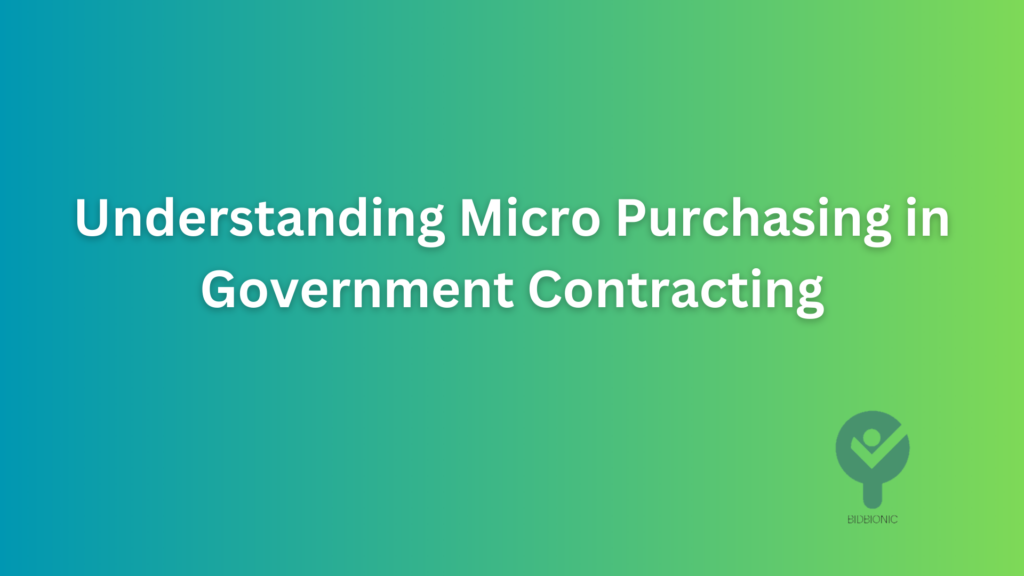Micro-purchasing and simplified acquisition are two important concepts in the realm of government contracting. In this blog post, we will delve into what these terms mean, how they function, and their significance for businesses interested in government contracts.
Micro purchasing refers to purchases made by government agencies with a total value of up to $10,000. It is a streamlined process that allows agencies to buy goods and services without the need for external permission or extensive approval procedures. Departments within an agency, such as supply, IT, or logistics, often have the authority to make micro purchases using their own internal funds. This can be done through a department-issued credit card or by directly engaging with contractors.
On the other hand, simplified acquisition covers purchases ranging from $10,001 to $250,000. While agencies still need to ensure compliance with regulations, simplified acquisition offers a more straightforward procurement method compared to larger contracts. Instead of going through a complex bidding process, agencies can obtain three qualified bids and select the contractor that best meets their requirements.
Micro purchasing and simplified acquisition are sometimes used interchangeably, as both involve acquiring goods and services without extensive competition. Agencies may reach out to contractors directly to request quotes or bids, particularly for micro purchases that exceed $10,000. Simplified acquisition is ideal when agencies require a quick turnaround and have a clear understanding of their budget and needs.
Government Purchase Card (GPC) holders play a significant role in micro purchasing. These individuals are authorized to make purchases on behalf of their departments or agencies. GPC holders undergo training and are issued cards with predefined spending limits. Each department within an agency may have its own GPC card, allowing them to make purchases within their allocated budget.
Micro purchasing provides an excellent opportunity for businesses to secure government contracts. These contracts, even if of lower value, contribute to a company’s past performance record and can open doors to larger opportunities in the future. They also offer a chance to showcase capabilities and build relationships with government agencies.
While micro purchasing primarily applies to federal government agencies, similar principles can be found in local government procurement. Although there might not be a universal term for micro purchasing at the local level, municipalities and states often have their own purchasing thresholds and simplified acquisition processes for smaller-scale acquisitions.
In conclusion, micro purchasing and simplified acquisition are valuable avenues for businesses interested in government contracting. By understanding these concepts and their implications, companies can navigate the procurement landscape more effectively and seize opportunities to work with government agencies.
Top of Form

